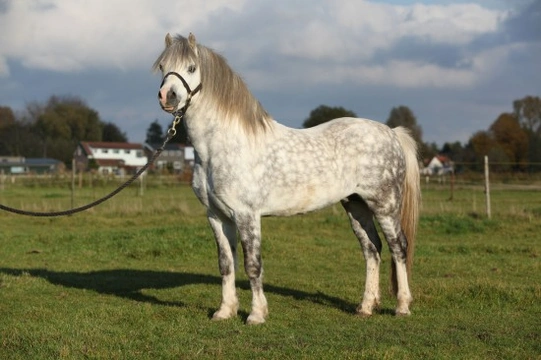
The Cheeky Welsh Mountain Pony: A Child's Perfect First Pony
Despite their striking appearance, Welsh Mountain Ponies, also known as Welsh Section A, are a top choice for young children seeking a first pony. Originating from the wild Welsh moors, these ponies are hardy, intelligent, and possess a cheeky charm that quickly endears them as family members.
History of the Welsh Mountain Pony
Like many native UK breeds, the Welsh Mountain Pony developed naturally on Wales' wild moors. Early settlers domesticated them, recognising their capacity to work hard, carry heavy loads across rough terrain, and thrive on sparse grazing. Historically, they served farm duties and supported militias, contributing notably to Henry Tudor's ascendance to the throne.
In the 15th century, Arabian blood was introduced to enhance the breed. This mixing resulted in varying sizes and shapes within the Welsh Pony population. The smallest, known today as Welsh Section A or Welsh Mountain Pony, nearly faced extinction due to a royal cull under Henry VIII. However, they survived by fulfilling mining roles and, more recently, serving as trusted children’s ponies. The Welsh Pony and Cob Society, founded in 1901, has overseen breed standards and registration, helping these ponies flourish in shows and breed classes.
Appearance of the Welsh Mountain Pony
Welsh Section A ponies fit the classic Thelwell pony image. Not exceeding 12 hands (48 inches), they exhibit a strong build with deep girth and short, sturdy legs, enabling endurance and distance coverage. Their sloping shoulders and lean hindquarters give a lively spring to their gait. Arabian influence is visible in their delicate dished faces, fine muzzles, large expressive eyes, and small ears that contribute to their beautiful countenance.
They come in any solid colour except piebald or skewbald, with thick manes and tails acting as natural weather protection. Their winter coats thicken significantly to guard against cold, and light feathering on the fetlocks provides extra heel protection from mud and moisture.
Differences Among Welsh Pony Sections
The Welsh Pony stud book classifies four sections: Welsh A, B, C, and D, all sharing temperament and conformation traits but differing mostly in size and build.
The Welsh A, or Welsh Mountain Pony, is the smallest and stockiest. Welsh B, slightly larger up to 13.2 hands, appear finer with more Thoroughbred blood. Welsh C resembles Welsh A in body but carries Cob ancestry, being heavier. Welsh D is the largest and heaviest, bred for endurance under saddle and harness, with robust bone structure and powerful movement.
Why Are Welsh Mountain Ponies Ideal for Children?
Their small stature combined with surprising strength enables them to carry children and adults up to 10 stone (about 140 pounds). Welsh Mountain Ponies are attentive guardians for smaller children while adapting quickly as riders develop skills in diverse equine sports.
They enjoy grooming, thrive on attention, and exhibit a unique humorous cheekiness that fosters strong bonds with children. Their intelligence helps them excel in gymkhana, jumping, and cross-country, making learning enjoyable and engaging. Their stature also makes them popular lead-rein ponies in shows, confidently guiding very young riders.
Caring for a Welsh Mountain Pony
Accustomed to moorlands, they are easy to manage outdoors if not pampered excessively. Their strong hooves need shoeing only when frequently ridden on hard surfaces, predominantly the front feet.
Due to their natural adaptation to sparse grazing, Welsh Mountain Ponies can suffer from obesity and laminitis if overfed or kept on lush grass. Laminitis causes severe hoof pain and lameness, so spring starvation paddocks are commonly used to regulate grazing. Extra feed is unnecessary unless preparing for events or showing.
If stabling, ensure low doors allowing visibility to avoid boredom that may cause stable vices such as chewing wood or bedding. Providing treat-filled toys or a swede as a stable treat keeps their natural foraging instinct happy.
Welsh Mountain Ponies remain a resilient, intelligent, and affectionate breed offering beginners a supportive and endearing equine companion suitable for many years of riding enjoyment.
For those interested in finding or purchasing a Welsh Section A pony, look to reputable breeders to ensure ethical and responsible practices.



